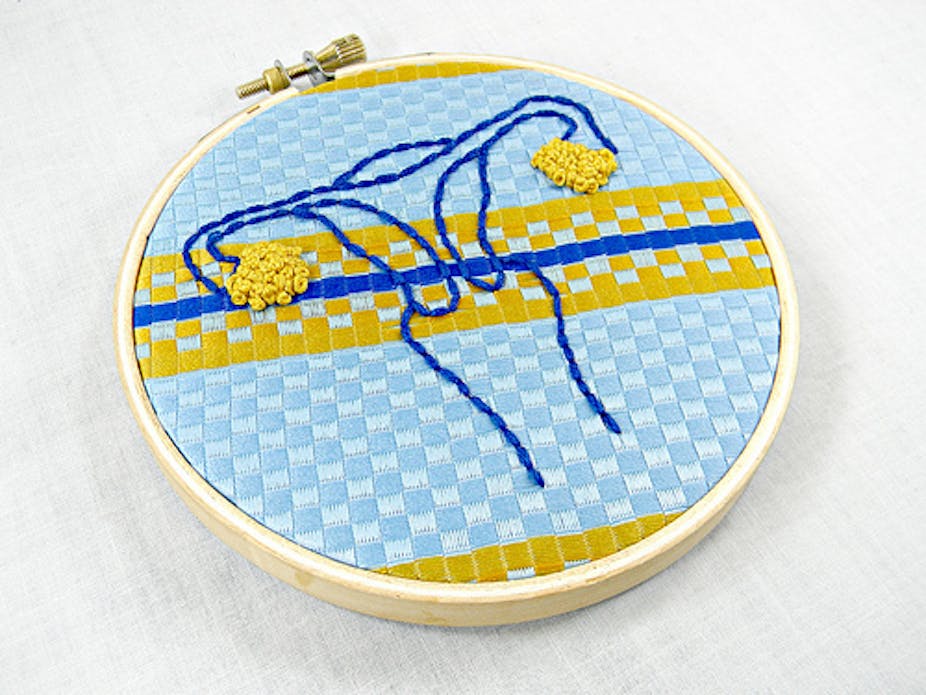Increasing numbers of Australian women are asking their doctors for a designer vagina. So many, in fact, that the government is reviewing whether such surgery should be publicly-funded via Medicare.
Over the last ten years, claims through the medical benefit scheme (MBS) for labioplasty have increased from 200 to over 1,500 per year. The resulting cost, rising from $40,000 to $740,000 annually, has led to a government review questioning the procedure.
The Royal Australian and New Zealand College of Obstetricians and Gynaecologists strongly discourage labioplasty, unless there are compelling medical reasons. They cite a range of potential complications, including scarring, permanent disfigurement, infection, pain, and altered sexual sensations.
So why are so many Australian women demanding labioplasty, a surgical operation that involves reduction of protruding labial tissue surrounding the vagina? The main reason given is dissatisfaction with the appearance of the genitals.
This dissatisfaction is not unusual in the general population. One study found over 50% of women felt unhappy with the size or appearance of their labia. In another, over 40% of women had considered genital surgery.
The dramatic increase in genital dissatisfaction over the last decade is not due to changes in women’s anatomy. It’s due to changing social views on what is a “normal” vulva and vagina. A prepubescent, hairless, Barbie doll appearance now stands as the ideal.
Pornography is partly to blame, depicting women’s genitals as a slit, with no visible labia at all. But the Australian censorship board enshrines such practices in law by allowing only “discrete genital detail” to be shown.
The airbrushing of photographs of women’s genitals is the inevitable consequence. The fact that women requesting labioplasty bring such images to their doctors as a model for surgery shows the insidious nature of pornography’s influence.
But how else can heterosexual women find out what “normal” female genitals look like? Outside of pornography, women’s genitals are culturally invisible. The days of self-examination in feminist consciousness-raising groups, when women used a mirror and speculum to explore their vaginas, are long gone.
This is a shame. If we dared to look, we would find that the majority of adult women look very different from the photographs depicted in pornographic magazines. A recent study of genital size in 50 women found huge variation, with most women having protruding labia, not a simple slit.

Medical textbooks ignore this fact, depicting women’s genitalia with smaller proportions than even those shown in pornography. Labia that protrude in a normal way are described as “hypertropic” (abnormal enlargement), but there’s no clear guidance on what level of protrusion merits such diagnosis.
With all this in mind, it’s not surprising that many women are referred for labioplasty without a physical examination, as the woman’s complaint of “abnormal” labial shape or size is simply accepted. When an examination is conducted, women are still referred for treatment, even if their labia are in the normal range.
The medical profession may simply be guilty of believing that they can make women happy by acquiescing to their requests for genital surgery. Yet many women are sexually dissatisfied or anxious about their genitals after surgery and, for some women, labioplasty is just one of many cosmetic surgery procedures undertaken.
This is not to criticise women who seek such surgery. It’s difficult to resist the idealised images of female sexuality that surround us. The reality of the female body has been airbrushed for centuries, with artists depicting the nude with a vaginal slit and no hair. All notions of seepage – flesh or fluid – are completely removed from the frame.
The current popularity of Brazilian waxing (removing all pubic hair) has made prepubescent genital the new norm. It also draws attention to labial skin that would otherwise be concealed, a further explanation for the increased numbers of women seeking labioplasty.
Rather than subjecting women who are dissatisfied with their genitals to the surgeon’s knife, we need to inform them, and their partners, about what is normal. Some surgeons show women images of the wide range of female genitals to try to dissuade them from labioplasty.
Artists, photographers, women’s blogs, and feminist action groups have also joined the quest to normalise and celebrate the diversity of women’s genitals.
The real issue here is women’s dissatisfaction with their bodies. We should be challenging the unrealistic images and expectations that perpetuate this unhappiness, not cutting into women’s flesh.

